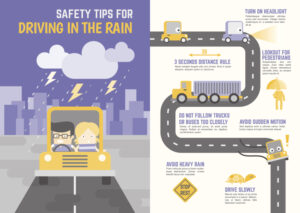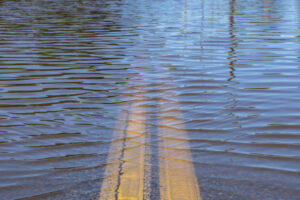Two years ago, a massive rainstorm devastated British Columbia and left a trail of destruction in its wake.

During November 2021, an “atmospheric river” unleashed an immense volume of water onto already saturated soil, rendering it unable to absorb any more moisture. This situation went from bad to worse when higher temperatures caused streams to overflow due to melting snow.
The consequences were severe: about 15,000 individuals had to leave their homes, major roads and bridges were washed away, and farms were flooded, some with depths of up to two meters. Tragically, landslides claimed the lives of at least five people and caused over an estimated $450 million in damage.
To compound matters, scientists now predict an increase in these types of storms in the future, leading to more flooding and destruction. According to recent research conducted by Environment Canada, the November 2021 rainstorm was at least twice as likely to occur due to climate change, signaling the inevitability of more future rainstorms and subsequent flooding.
These developments highlight the dangers of climate change and we need to prepare for the worst in all aspects of our lives, including our experiences on the road. Therefore, we offer the following recommendations to help reduce the dangers posed by a progressively hazardous environment.
Exercise Caution When Encountering Flooded Roads While Driving

In situations where heavy rain causes flooded roads, it is important to remember that driving through more than 10 centimetres of water could cause severe damage to your vehicle, as the water may damage the engine or electrical systems, leading to expensive repairs.
The best course of action is to avoid driving through any flooded area to prevent potential damage or a collision with water, as was the case for Michelle Kovacs. She tried to drive through a flooded area during a severe storm, and ICBC declared her vehicle a total loss due to water damage.
When driving through shallow water, reduce speed to avoid stalling and assess the area for any danger. It is always better to be safe than sorry, so if you encounter flooded roads, it is best to stop driving and turn around. If a road is closed, do not continue because floodwater can quickly sweep away vehicles, roads and bridges.
Be Cautious when Buying Cars Damaged by Floods
Many drivers are unaware that vehicles for sale may have suffered flood damage. These vehicles are notorious for being unreliable and requiring frequent repairs. New and luxury vehicles are particularly at risk of flood damage due to their complex computer systems.
How does this occur and why aren’t “write-off” vehicles scrapped or destroyed?
Each year, hundreds of thousands of vehicles in North America are declared write-offs. However, this does not render them entirely worthless. Insurance companies consider a vehicle a write-off when the cost of repairs exceeds its “book value,” which is the standard value for all vehicles on the market.
Consequently, if a vehicle with a book value of $10,000 requires $12,000 to restore it to its original condition, it will be declared a write-off and then auctioned off to the highest bidder by the insurance company.
In many cases, car enthusiasts and hobbyists purchase these vehicles and invest effort into making them sellable, aiming to make some profit. For people with limited funds, these vehicles can actually be a good deal.
However, flood-damaged vehicles often cause problems for potential buyers. Unfortunately, many cars have been declared write-offs due to flood damage. According to CARFAX, a firm specializing in vehicle sales and history, 378,000 flooded vehicles returned to the streets in 2021 and, in 2022, 399,000 flooded cars returned.
Additionally, some water-damaged cars are repaired and resold in other regions without the buyer being made aware of their previous history.
How to Spot a Flood-Damaged Vehicle
If you are thinking of buying an affordable used car from a private seller, it is important to make sure the vehicle has not been damaged by flooding. Use the following checklist to evaluate the car:
- Check the carpets for musty, mildewed, or muddy conditions. New or mismatched carpets in an older vehicle could be signs of flood damage.
- Look for signs of water damage such as a wet owner’s manual or condensation in headlamps, taillights, or fog lamps.
- Check unusual places for mud, like the corners of the trunk, under the seats, or in the glove department.
- Inspect screws, door hinges, door springs, and trunk latches for rust.
- Ask the seller about the car’s history and accident records. While most people are honest, it’s important to be cautious; not everyone can be trusted.
- Examine the air filter. A wet and textured cardboard frame indicates water damage.
- Check The engine oil. If the water is mixed with the oil, it may have a consistency similar to a milkshake.
- Do online research to find the vehicle’s accident and repair history. Access a comprehensive search on carfax.ca by entering the vehicle identification number (VIN) on the website for just $46.95.
- Finally, hire a mechanic to inspect the vehicle. This can be done after completing the steps above and is worth it to avoid costly repairs for a flood-damaged vehicle.
In conclusion, it is important to recognize that as climate change continues, the risk to vehicles from rainstorms and other extreme weather events will increase. This means that more flood-damaged vehicles will be available for sale.




Reliance Insurance proudly serves
Burnaby and the Vancouver area